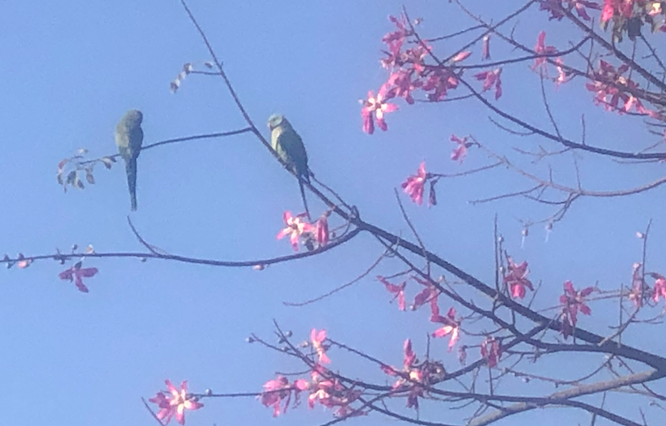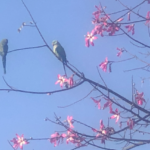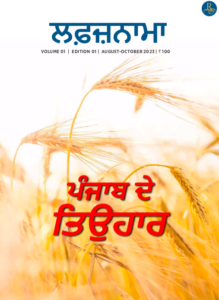Haiku Blossoms

We are launching a new column on Rhyvers—“Haiku Blossoms” for an appreciation of haiku poetry. My friends & family members often ask me “What is haiku?” This column is being initiated to share an appreciation of this ancient art of poetry.
Hope that readers will develop an interest in haiku poetry. Every week, we will talk about haiku and its forms, its aesthetic literary values, and the mindfulness this poetry brings to both poets and readers.
Haiku is considered the shortest non-rhyming Japanese poetry form written in three lines, in 5-7-5 format, with 17 syllables in English and the poem is primarily related to nature including human nature. But more formally the schema is widely practiced as short/long/short (s/l/s) form in haiku writing instead of strictly following the syllable count. Haiku is a Japanese art form of poetry having a long and rich history of more than 400 years. The word ‘haiku’ is derived from ‘hokku’ which means starting verse or the opening stanza. Matsuo Basho (1644-1694) was the pioneer of writing classical ‘hokku’ and he rendered aesthetic values to the verse writing with brilliant poetic spells. He pioneered masterpieces of haikai including related genres and assimilated commonness and human aspects into the genres. Later Masaoka Shiki (1867-1902) christened “hokku” to “haiku” (hai means amusement and ku means verse) at the end of the nineteenth century.
Haiku is written in the present tense, in ordinary language, and works particularly well when two different images are used to spark off each other. Haiku comprises an expression of the wonder of Nature, the seasonal changes, a love for life, and at times, deep thoughts. The inner world of the poet observes the external world and from this keenness, a haiku is born and is expressed in three brief lines.
Haiku don’t tell or even describe anything. They allow the reader to enter the poem in their own way. Subtly, the writer dares the reader to enter and discover the truth. These Zen moments can be therapeutic since they exercise both the right and the left side of the brain. Traditionally haiku are rooted in natural history and the seasons, and make us co-conspirators with wildlife, as nature half-writes the haiku before we’ve even put pen to paper.
Students are taught the following definition of haiku : “A 3-line poem related to nature including human nature adhering to a 5-7-5 syllable formula.”
Haiku consists of 17 ‘on’ or ‘morae’ (sound units) written in Japanese in a vertical single line (top to bottom) with no spacing. There is no concept of syllables in the Japanese language. The 17 (5-7-5) sound-unit or phonetic unit (‘on’ or ‘morae’) is roughly equivalent to 11-12 syllables in English and is composed in a short-long-short line pattern (all in lower case). Yet, more than a formula, composing haiku is a path— a way of observing life and catching the ephemeral with brevity. It does not “tell” but “shows”, and captures a moment in time. Haiku poems are generally about nature and are written with a seasonal reference (‘kigo’ word). Haiku is sometimes called “one-breath poetry” which means that it can be recited between the in-breath and the out-breath. That is just how short a poem it really is!
A haiku has two parts or two images, in the form of a ‘fragment’ (Line 1) and ‘phrase’ (Lines 2 and 3), and they juxtapose each other either as an association or a contrast. The art of juxtaposition is an exploration of reasoning and a poetic logic that resides in one’s imagination. Between fragment and phrase, there lies a surrealistic silence in the form of pause – “kireji”, or cutting word. In English, it is denoted by punctuation and one can put “dash” or “ellipsis” to separate the two distinct images and to provide structural support for haiku. If the poet thinks that the expression is explicit for the reader to understand the images without difficulty, the natural pause itself takes care of the cutting word. The “Kireji”, in its sublime form, sparks the juxtaposition or disjunction of the two images (syntactic pivot) facilitating a “leap”. Haiku is not a sentence divided into three short lines, hence there is no capital letter or full stop in haiku writing, and there is no title of the haiku. Additionally, the two images should not reflect simple cause and effect. Minimum use of adjectives, articles, gerunds, refraining from the use of simile, metaphor (with exception of implied poetic predicament), adverbs, verbs, and conditional clauses are some of the essential characteristics of writing haiku. In general, the haiku should not be personified. “The manifestation of awareness, freshness, poetic truth and honesty is the lighthouse of the haiku spirit” as advocated by Pravat Kumar Padhy, my mentor and a celebrated haiku poet.
A haiku reflects simplicity and honesty in expression without any artificiality, complexity, or pretense. Robert Spiess says, “A haiku lets things become what they are”. The poetic sincerity as aspired by Basho is the cornerstone of haiku writings. There has to be a soul, freshness, and honesty in it to radiate its brilliance. W Hackett says, ‘Lifefulness, not beauty, is the real quality of haiku’.
Japanese poetry has become a much-loved art in the literary world. Through this column, we will explore this poetic art and its aesthetics, we will journey together and discover the haiku spirit of the four masters of haiku poets from Japan: Matsuo Basho (1644-1694), Yosa Busan (1716-1783), Kobayashi Issa (1763-1827) and Mosaoka Shiki (1867-1902). Their work is still the model for traditional haiku writing today and has inspired haiku poets over the years.
Here are some classical haiku by the four Masters.
old pond
a frog jumps into
the sound of water
-Basho (Translated by Jane Reichhold)
The sea darkens
and a wild duck’s call
is faintly white
-Basho (Tr. Makoto Ueda)
On a bare branch –
A crow is perched
Autumn evening
-Basho (Translated by Ueda)
Evening wind:
water laps
the heron’s legs.
-Buson (Tr. Robert Hass)
Separating from the bell,
The voice of the bell.
– Buson (Tr. Donald Keene)
Do not tread on the grass
Where fireflies glowed
Last night
-Issa (Tr. Asataro Miyamori)
O snail
Climb Mount Fuji,
But slowly, slowly!
-Issa (Tr. R H Blyth)
A carp leaps up
crinkling
the autumn moonlight
– Shiki (Tr. Burton Watson)
I’m trying to sleep!
Please swat the flies
lightly
– Shiki (Tr. Michael R. Burch)
Have an enjoyable week! See you next week with some more haiku.















